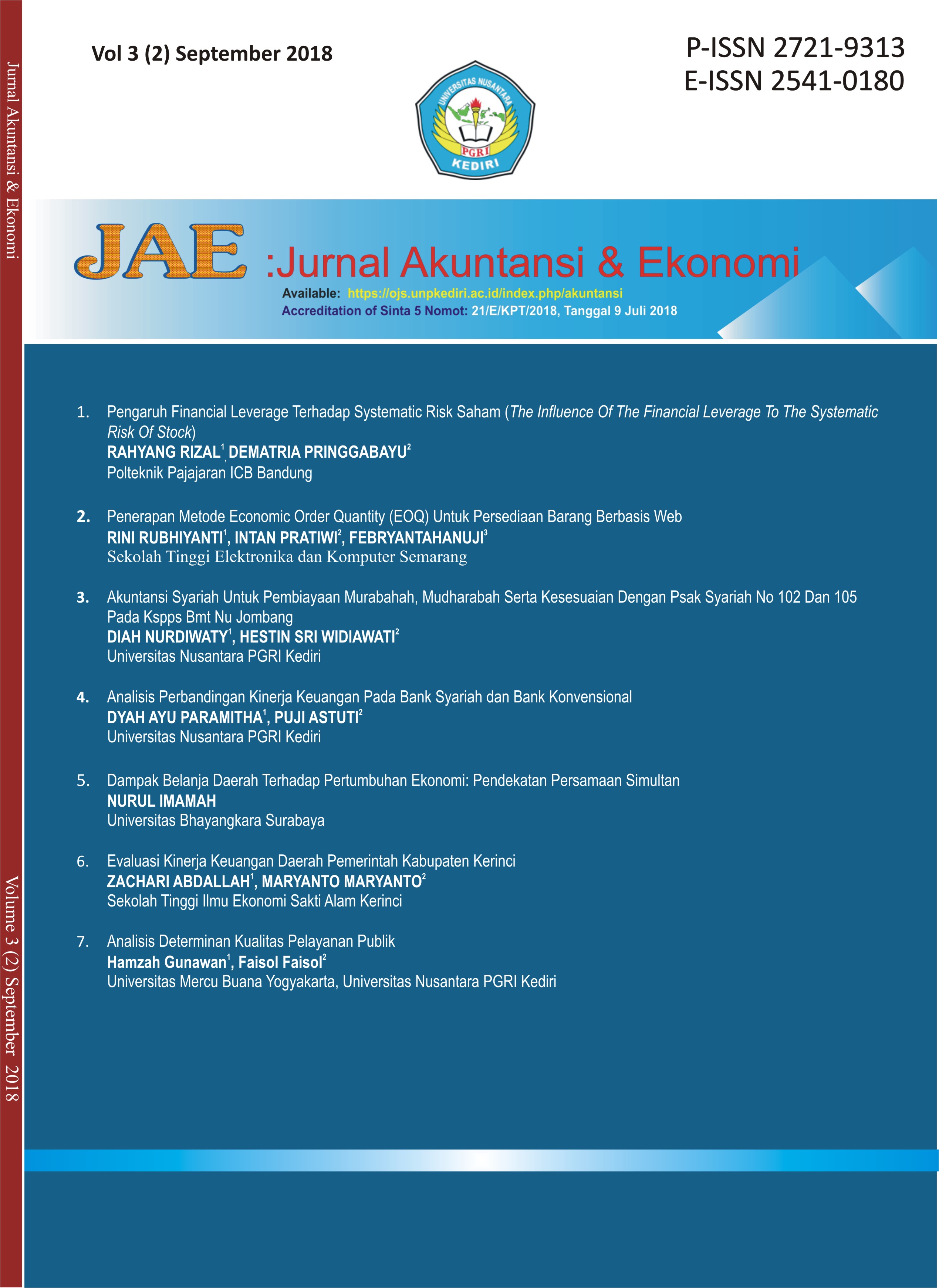Analisis Perbandingan Kinerja Keuangan Pada Bank Syariah dan Bank Konvensional
DOI:
https://doi.org/10.29407/jae.v3i2.12495Abstract
Banking financial institutions in Indonesia consist of two systems, namely Islamic and conventional banking. The bank as a media regulation in the field of finance, is undeniable in the implementation of its main activity is also accompanied by the achievement of maximum profits. Benefits can be seen from good financial performance. In this study, financial performance is seen from the ROA ratio. Bank performance measurement (performance measurement) used in this study is the bank's financial ratios which include Capital Adequecy Ratio (CAR), Loan To Deposit Ratio (LDR) and Total Assets. This study aims to determine and analyze the effect of the level of CAR, LDR and total assets on the financial performance of Islamic Banks and Conventional Banks and to compare the financial performance of Islamic banks and conventional banks.
The research approach used in this study is a quantitative approach. The population in this study are all Islamic banks and conventional banks operating in Indonesia in the 2015-2017 period. While the sample in this study are 3 Islamic banks and 3 conventional banks. The sampling technique uses purposive sampling method and data collection techniques using documentation method with secondary data sources in the form of quarterly financial reports during the study period. Data analysis techniques include descriptive statistics, classical assumption test, multiple linear regression, determination coefficient, t test and F test.
The results show that partially the ratio of CAR, LDR and total assets there is a significant difference between Islamic banks and conventional banks. While simultaneously CAR, LDR and total assets have an influence on financial performance.
Keywords: CAR, LDR, Total Assets, Financial Performance, Islamic Banks and Conventional Banks.
Downloads
Published
Issue
Section
License
Authors who publish with this journal agree to the following terms:
- Copyright on any article is retained by the author(s).
- The author grants the journal, right of first publication with the work simultaneously licensed under a Creative Commons Attribution License that allows others to share the work with an acknowledgment of the work’s authorship and initial publication in this journal.
- Authors are able to enter into separate, additional contractual arrangements for the non-exclusive distribution of the journal’s published version of the work (e.g., post it to an institutional repository or publish it in a book), with an acknowledgment of its initial publication in this journal.
- Authors are permitted and encouraged to post their work online (e.g., in institutional repositories or on their website) prior to and during the submission process, as it can lead to productive exchanges, as well as earlier and greater citation of published work.
- The article and any associated published material is distributed under the Creative Commons Attribution-ShareAlike 4.0 International License







